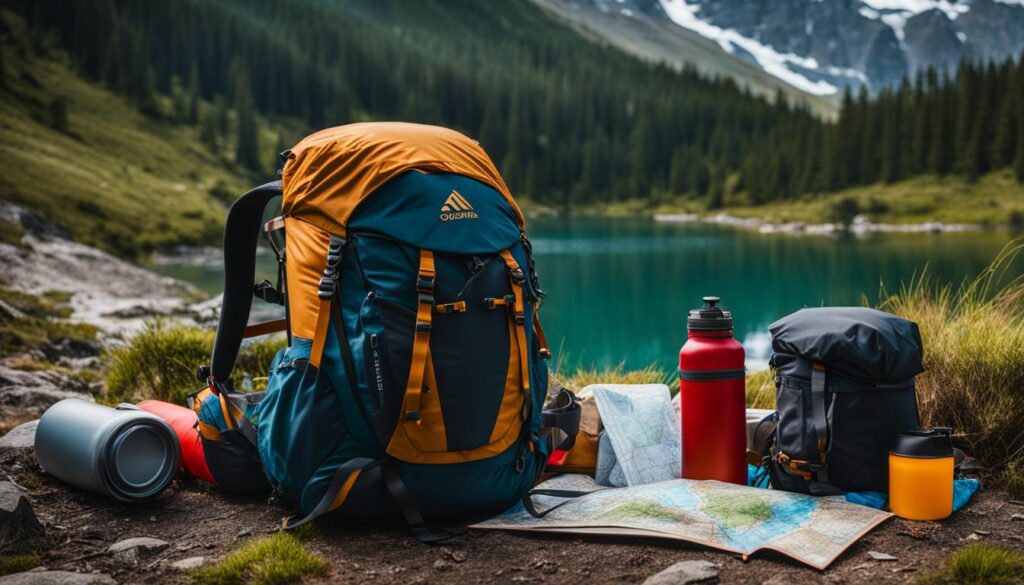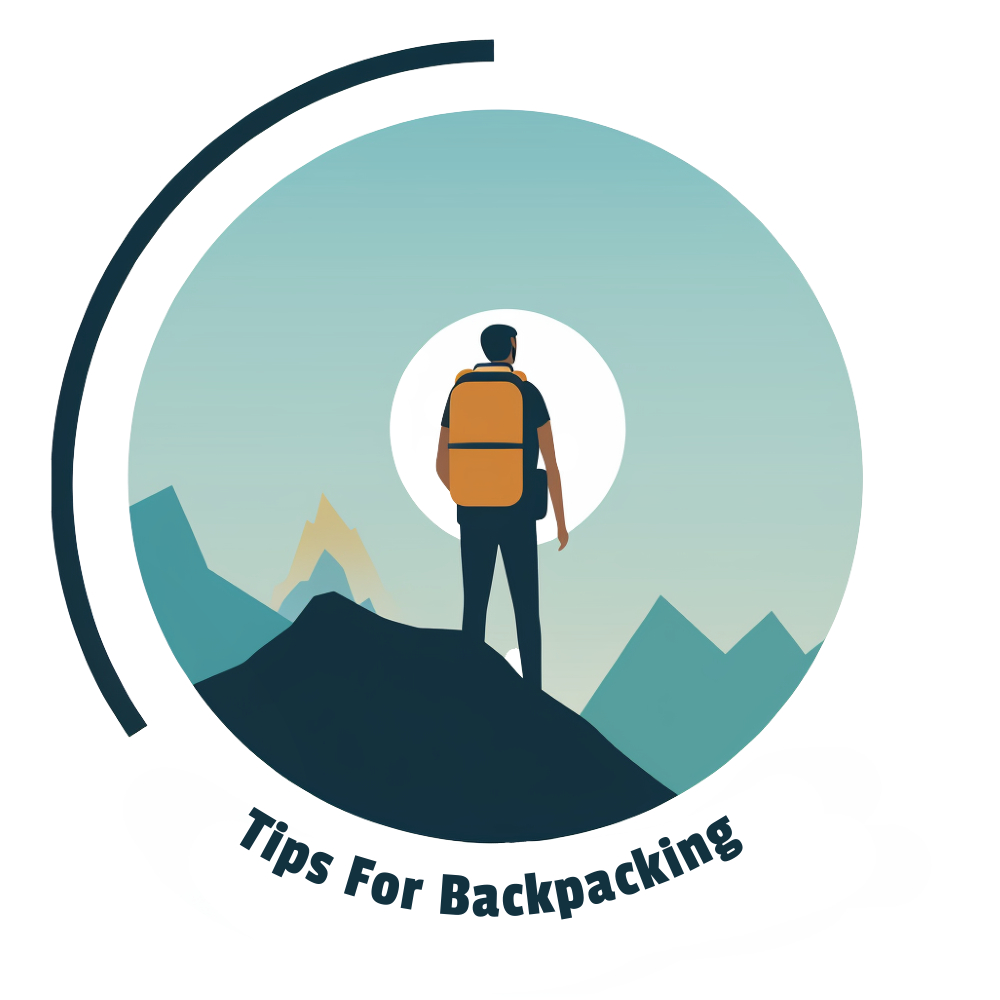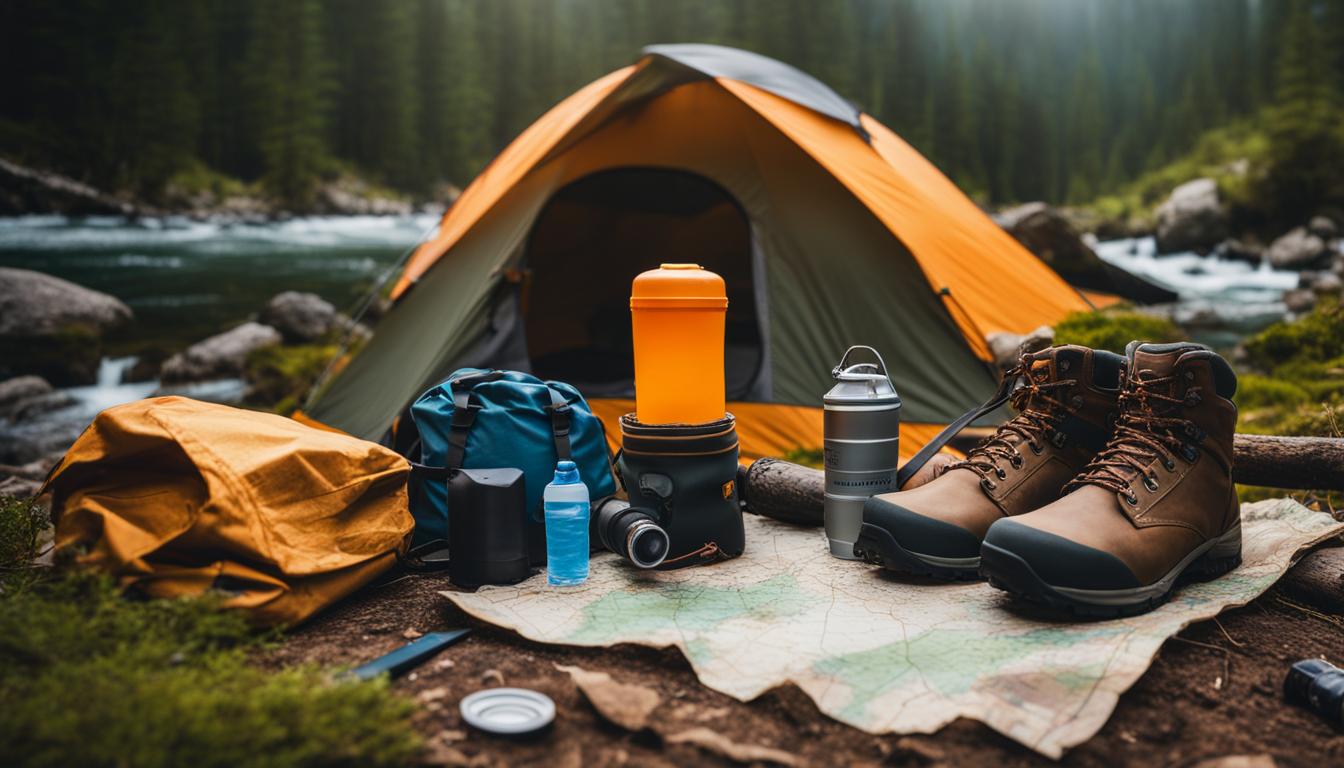Whether you’re a first-time backpacker or a seasoned veteran, having the right gear is crucial for a successful backpacking trip. From essential equipment like tents and backpacks to kitchen gear, footwear, clothing, and personal items, being well-prepared can make all the difference in your outdoor adventure. Here is a comprehensive list of must-have items for every backpacking trip, compiled from reliable sources and expert recommendations.
- Must-have items for every backpacking trip include essential equipment, footwear, clothing, and personal items.
- Backpacking equipment such as tents, backpacks, sleeping bags, and water filters are essential for a comfortable and safe trip.
- Footwear and clothing like hiking boots, rain jackets, and baselayers are necessary for protection and comfort in varying weather conditions.
- Creating a checklist of must-pack items can help ensure you have everything you need for your backpacking adventure.
- Researching and investing in top-quality backpacking gear will enhance your experience and provide long-lasting durability.
Backpacking Equipment

When it comes to backpacking, having the right equipment can make all the difference in your outdoor adventure. Here is a list of essential gear that every backpacker should have:
- Backpacking tent: A lightweight and durable tent that provides shelter and protection from the elements.
- Backpacking pack: A comfortable and adjustable backpack that can carry all your gear.
- Sleeping bag: A warm and compact sleeping bag that provides a good night’s sleep.
- Sleeping pad: An inflatable pad or foam pad that provides cushioning and insulation.
- Water filter or purifier: A device that removes impurities from water sources, ensuring safe drinking water.
- Hydration bladder/bottles: Containers for carrying water to stay hydrated on the trail.
- Headlamp: A hands-free light source for navigating in the dark.
- Backpacking stove & fuel: Lightweight and portable cooking gear for preparing meals.
- Backpacking food: Lightweight and nutritious meals that are easy to prepare on the trail.
- Cookware & utensils: Pots, pans, and utensils for cooking and eating.
- Trekking poles: Adjustable poles that provide stability and support while hiking.
- Daypack: A small backpack for day hikes or short excursions.
- Backpacking pillow: A compact and comfortable pillow for a good night’s sleep.
- Sleeping bag liner: A lightweight and washable liner that adds warmth and keeps your sleeping bag clean.
- Footprint/ground cloth: A protective layer that goes under your tent to prevent damage and keep the ground dry.
- Extra stakes & guylines: Additional accessories for securing your tent in different conditions.
Having these essential items will ensure that you are well-equipped for a successful backpacking trip. Whether you’re embarking on a weekend getaway or a long-distance trek, investing in quality gear is crucial for your safety and comfort in the great outdoors.
What Essential Items Should I Bring for Backpacking in Remote Destinations?
When heading to remote destinations, packing the right backpacking essentials for remote destinations is crucial. Be sure to bring navigation tools, emergency supplies, proper clothing, a reliable tent, and a high-quality backpack. Adequate food and water, a portable stove, and a first aid kit are also must-haves.
Footwear & Clothing
When it comes to a backpacking trip, having the right footwear and clothing is crucial for comfort and protection. The first item on the list is a sturdy pair of hiking boots or shoes that provide excellent ankle support and traction. Pair them with quality hiking socks to prevent blisters and keep your feet dry.
Next, consider your bottom half. Opt for durable hiking pants or shorts that are lightweight, quick-drying, and offer freedom of movement. A rain jacket or hardshell is a must-have to keep you dry during unexpected showers or storms. And don’t forget a down or synthetic jacket for warmth during chilly nights.
Baselayers are essential for regulating body temperature. Choose moisture-wicking fabrics that can keep you cool in hot weather and warm in cold conditions. Additionally, pack a pair of camp shoes to give your feet a break at the end of the day, a ballcap to shield your face from the sun, and a sun protection shirt to guard against harmful UV rays.
To prepare for inclement weather, pack a pair of rain pants, a beanie to keep your head warm, and gloves for added warmth and protection. Gaiters are useful for keeping debris out of your shoes, and a neck gaiter or buff can provide extra warmth or sun protection.

